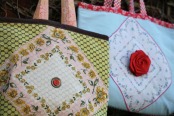I love crafty people (obviously). And I love crafts-based businesses (obviously). But man oh man, as a writer and marketing professional, I see so much missed opportunity out there! The biggest missed opportunity? The "About" page. Your "About" page is your chance to show why your company/service/product stands out. It's a chance to tell your story. That matters, because in today's story-based economy, people care--not just about WHAT you do. But about WHY you do it.I know this because my main business is storytelling. I help people build brand stories. In the past few years, I've seen how much people struggle to write their "About" pages (sometimes called "Our Story" or "Company History" or something similar) for their business and book web sites.That's why I'm doing a teleclass this Thursday (Sept. 6) at 2:00 EST (totally free) all about how to craft better "About" pages. Hop on over to my main business site, right here, and you can read about it and sign up. Here's that link again to share: http://judiketteler.com/teleclass-what-are-you-about-anywayHope you can make it!
Yikes, it’s been far too long since I’ve posted a blog update! I’ve been so focused on building my newsletter that I’ve put the blog on the backburner (it’s hard to do lots of different things well, I’ve found). But I did want to pop in and let readers know about something very cool I’m organizing.
I’ve been thinking lately how people can make a splash with their brand: how do you get your ideas out there into the world? We know how big companies do it (with huge marketing budgets and staffs of people). But what about solopreneurs, Etsy shop owners, fabric designers, and other creative types? You’ve got ideas too! 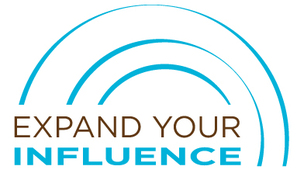 That’s why I’m organizing a “telesummit”: Expand Your Influence: A Virtual Conference on Turning Big Ideas into Brand Extensions (March 19 – 23) is an interview series all about brand extensions—larger projects like books, eBooks, videos, and TV shows that help you get your big idea out there into the world. It’s going to be energetic and insightful, and totally multidisciplinary (from sports psychology to fabric design!). Speakers range from designer and author Amy Butler to TV show host and designer Angelo Surmelis to self-publishing guru Peter Bowerman, and a whole lot more, like a literary agent (who specializes in craft books), a business coach, and business owners/bloggers who leveraged their brand/blog to write books and sell fantastic branded products. You’ll not only come away from this interview series inspired to create something amazing, you’ll also learn practical tips for marketing your brand extension.
How do you listen? Well, it couldn’t be easier, because it’s free. And it only requires signing up. You can listen live, completely free (calls are at 10:00 a.m. and 2:00 p.m. EST each day). Register here. Share this link with anyone you’ve ever heard say they have a big idea.Oh, and I almost forgot: Amy Butler (who you are definitely going to want to hear from) is also offering a book giveaway when you sign up! (Details are on the sign-up page)
So, I’m obviously not doing this because I heart technology (did you read my newsletter last week?). So, what’s the deal? First, I am a geek and I want to study some things, publicly: how the splash happens (what Malcolm Gladwell calls “the tipping point”), what remarkability has to do with it (what Seth Godin calls “the purple cow”), and why starting with “why” always matters (Simon Sinek). But it’s not just about great thinkers I admire. It’s about action. And learning from others’ actions. (I sort of want to take over the world, so there are a few things to learn.)
It’s also a chance to interview superbly cool and extremely brilliant people who are doing inspiring, revolutionary, and/or intriguing things with their brand extensions. Basically, I love the flow of a good conversation. I want to do backstrokes in it. I used to only get to interview cool people when I was writing an article for someone else. Now, I’m doing it for me—and definitely for you.
So sign up, right here!
I have been remiss about blogging (and sewing)--mostly because I've been getting my new site set up and working on my marketing efforts for my copywriting business. I do have a fun new project that I'm going to be putting up here soon. (The tutorial is almost finished.) I also hope to bring you another Q&A and giveaway soon. (And, of course, I'm hard at work on Max's Batman costume for Halloween--pictures forthcoming!)But, I do have an exciting announcement: I am now selling Sew Retro directly! I can't pretend that I'm even trying to compete with retailers. In order to not lose money, I have to charge the full cover price ($24.95), plus shipping ($5 to US; $10 to Canada; $20 international; I checked all the rates with the Post Office). So, if you're looking for the best price on the book, I can't give you that (although I may run discounts from time to time).But, if you want to buy a signed copy--directly from me--then, this is a great option! It's more expensive, for sure. But there is a charm to buying directly from the author. And that's what I'm offering. I don't expect the books to start flying off the shelves. But I've got them, ready to personalize and ship, if anyone is interested! I still need to find a good place to promote it on this site, but for now, here is the link!Thanks for your support!
I’ve have career envy of Jennifer Worick for quite some time! A friend recommended that I get in touch with her five or six years ago because we had similar writing interests. When I clicked over to her site, I was super impressed. She’d written all of these books about interesting topics, and I was a bit in awe. Fast forward to last year, when we got the chance to meet at the CHA Supershow in Chicago. I learned that we had the same publisher (Voyageur) and the same agent. I also realized how smart she was about this whole book business. When I saw that she had started to offer book proposal writing classes, I knew that she would be the perfect Q&A for my blog. She’s written 25 books, including her latest, Simple Gifts: 50 little Luxuries to Craft, Sew, Cook, & Knit (which one lucky reader will win!). Jen is full of great ideas and great advice. Here, she shares some tips for writing your book proposal and marketing yourself.
To enter the giveaway to win a copy of Simple Gifts: 50 Little Luxuries to Craft, Sew, Cook, & Knit leave a comment here by Tuesday, May 31 at noon EST.
Q: First, tell me about the workshops you've been teaching!
Worick: My pal, Kerry Colburn, and I have been asked many, many times for publishing advice. She’s an author who was an executive editor at Chronicle Books and I’m an author who was editorial director at Running Press. So we’ve been on both sides of reviewing and writing book proposals and it seemed like a natural next step to share our insight to groups of aspiring authors. So we give talks and workshops to help folks write salable proposals and learn about the publishing industry. We currently offer events in Seattle but are looking at creating e-courses and electronic multi-media kits, as well as hosting events in different cities, in the next few months. 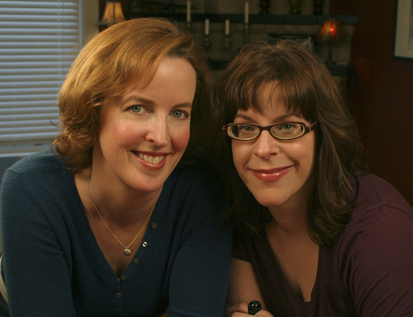 Worick and Colburn Q: How do craft book proposals differ from other book proposals?
Worick: Craft books, in some respects, are like cookbooks. Any sort of how-to book proposal needs to take into account that the projects will need tech editing and review for clarity and viability of projects. I think it’s helpful to include a complete list of the projects you’d plan to include, as well as step-out snapshots of a couple of projects (photos that match each step in the project).
There are a lot of craft books on the market so it’s also important to think about how your group of projects thematically hang together and are different from what’s already on the market. Are they all projects made for pets? Do they all have a floral motif? Are they all variations on a technique?
Q: How does an author make their proposal stand out from the field (either craft book proposal, or other non-fiction), and then how do you make your marketing efforts (to sell the published book) stand out from the field--especially in the craft world, which is starting to feel sort of saturated?
Worick: What Kerry and I advise in our Business of Books talks is that you first start in researching, not just your idea, but the market as well. It’s important to refine your idea based on what you see in the marketplace (both in the bookstore and online). If someone can get hundreds of free shawl patterns online to knit, what is going to make her shell out money for yours? What makes them so special? Do they all have intarsia designs that you’ve spent a long time figuring out? If there is something out there similar to yours, don’t despair. Just spend some time thinking about how to make yours more original and distinctive.
When it comes to marketing, there is a active online community for crafters so I’d recommend contributing to websites, commenting on other blogs, and writing your own blog. You’ll build up a community that can help evangelize your book when it comes out.
Q: What is the most challenging thing about doing a craft book proposal today (versus a few years ago)?
Worick: As you said, there is a lot of saturation in the market and it’s a tricky thing to find a great, specific idea that’s not TOO niche. Crafters are eager for the next thing to expand their skill set and blow their mind creatively, so if you can keep that in mind when developing your idea, you’ll strengthen its chances of being published. I wrote Backcountry Betty: Crafting in Style because I saw a desire to repurpose materials, incorporate natural elements you may have collected in a new way, and create inexpensive but clever projects.
Q: What is the most exciting thing about doing a craft book proposal today?
Worick: Well, for me, it’s two things: refining the overall concept and then brainstorming the individual projects. I don’t usually have all the projects figured out when I first develop a proposal. The creativity starts flowing and my ideas get more and more brilliant as I push myself to come up with fresh projects.
Q: Do you have like a top 3 list of the absolute best tips for pulling together your proposal (any proposal--craft or otherwise)?
Worick: Well, we have eight elements of a proposal that we talk about in our talks. But as far as tips:
1. Do your homework. Research and refine your idea.
2. You don’t have to write the book to sell the book.
3. Have a trusted friend review your proposal, maybe even a non-crafter. It’s important that you don’t assume anything and that your directions make sense. And sometimes as the author, you can’t see what’s missing or unclear.
Q: How important is negotiating with the publisher? This is foreign territory for many craft book authors, who are used to dealing with customers or running a business, but not necessarily negotiating rights and things for a manuscript.
Worick: It’s often hard to advocate for ourselves when we are negotiating a book deal. But that said, there are all sorts of points that have some wiggle room. If they won’t budge on royalty, then ask for a bigger advance or a “production grant” (a fee that you can use for materials or project development that won’t be part of your royalty). You can also ask for an escalator, where your royalty will increase when you hit a certain number of sales (say 15,000 units). And know all your options, what your bottom line is, and explore self-publishing options so you can see what might make sense for you. If you want all the control, have a large online community, and want to get your book to market quickly, self-publishing an e-book might be the way to go.
Q: Finally, can you talk about why it's important to build relationships with people--agents, publishers, press people, other authors/bloggers, etc--in order to really be successful in the bookselling business?
Worick: I think anything you can do to increase your knowledge of the publishing industry will help you in your quest to get published. Reading Shelf Awareness or subscribing to Publishers Marketplace can also help give you an idea of what deals are being made, what issues are of greatest concern to the industry, that sort of thing. You will become savvier and have a better idea of how to position yourself as the author and market your book effectively. Talk to your local bookstore staff, develop relationships with your crafting community and shops (again, both online and brick-and-mortar stores). As you build relationships and credibility, you increase your ability to market your book. You are probably already doing this naturally, because it’s where your interest lies. Just bring some mindfulness and purpose to your efforts and you’ll quickly become a desirable and marketable author.
See me talk about Sew Retro, and demonstrate how to make a yo-yo on the Fox 19 Morning Show (Cincinnati).
CraftGossip.com did a lovely write-up of my video for Sew Retro today (thanks, CraftGossip!). I thought I'd use the opportunity to do a post about making this video--why I decided to do one and what the process was like. This is based on the guest post that I wrote for my colleague Kelly Watson's excellent One Woman Marketing blog last month. It's perfect timing for re-purposing though! After recently interviewing both my agent and acquisitions editor for some blog posts here and here on selling craft book proposals, I've learned that things like videos are even more important than I realized. You can watch my video here.
The Initial Inspiration
I’m a total junkie for sewing books. I love looking through them for inspiration and ideas. However, I make good use of the library, and I’m pretty selective about what I’ll buy. I was browsing Amazon one night, when I came across Anna Maria Horner’s video for Handmade Beginnings: 24 Sewing Projects To Welcome Baby. I watched her three-minute video, and immediately fell in love with the book and everything about her, her adorable family, and the great projects for mamas and babies. Approximately two seconds later, I clicked on “Add to Cart.” Maybe it’s because I’m expecting myself, but I had to have this book now! There is no doubt that the video sealed the deal for me. This got me thinking: maybe there is something to this video thing after all. I know, as writers, being in front of the camera is the last thing most of us want to do. But at least for craft books, there is something extra special about the audio-visual dimension. Getting a quick snapshot of an author, seeing them talk about why they wrote the book, and then seeing some of the projects off the page and in real life grabs readers’ attention way more than a press release. Anna Maria Horner hooked me. Maybe I could use the same process to hook other people, I thought. Both my agent and publisher thought it was a great idea, too.
Getting Started
Through some local networking, I found a reasonable videographer, and started thinking about venue. I decided to shoot the video at my house, primarily in my office/sewing space. I wanted the right balance between homey and professional—I didn’t want it to look amateurish, but also, I didn’t want to be pretentious. After all, my sewing space is the place where I sew; it’s honest, and—along with my home in general—it says a lot about me and my retro tastes. Of course, I knew I’d have to clean, de-clutter, and style, but luckily these are things I’m pretty good at since I’ve produced dozens of home and garden stories for magazines.
Next, I wrote a script for myself. I tried to pretend like I was talking to friends over drinks: what would I want them to know about Sew Retro? I wanted the script to sound conversational, but still polished. It took several drafts to strike the appropriate tone, and I had to keep recording myself into a digital recorder and reviewing it until it felt like it had the right mix of breezy and smart. The final script was about 500 words, and took about three minutes to read. (Amazon suggests you keep videos between two and three minutes; five minutes is the cut-off.)
I also tried to practice being on camera, propping my cheap little digital camera on top of my printer and sitting there in my office chair talking (an extremely painful exercise, I admit). The hardest part about being on camera is trying to look and sound natural, when it feels anything but natural. Luckily, on the day of the shoot, my wonderful Web designer, Beth Kaiser, was on hand to art direct and help me relax in front of the camera. Also, I am a very unfussy person and wear only hints of makeup, but I knew that I’d come off pasty and uneven on camera without the right makeup. I’m very glad that I hired a makeup artist to get me camera-ready; it was well worth the $60.
My Camera Debut
The shoot itself took about half the day. I first read the script four or five times, with just the audio taping (for voice over). Then it was time to talk on camera, and we went through each paragraph about five times (just to make sure that we had enough usable takes that could be cut and pasted). We also got various shots of me sewing and/or working with fabric, as well as snapshots of my sewing space and the various projects scattered around the house and garden. I desperately wanted a shot of my two-year-old sitting calmly on the Groovy Patchwork Throw quilt outside, flipping through a book. But, of course, he had other ideas. (We were able to get about five seconds of footage of him before he had a meltdown.) So much for readers falling in love with my family! But I had to remind myself that the focus of my book was retro sewing and why we love retro, not the adorableness of my toddler (who, of course, is the cutest toddler ever in the history of toddlers).
A Good Promotional Tool
I’m really pleased with the final result, and feel like it was worth the $850 investment (honestly, I didn’t do any research on what videographers charge for this kind of thing, but the estimate seemed reasonable, so I just went with it). My publisher is still working on getting it up on Amazon (apparently, it's gotten a little more difficult to get videos up). I have it embedded in my site, and the publisher’s blog, and it's on YouTube as well. As craft bloggers interview me or mention Sew Retro, I’m hopeful they’ll do a link to the video, too.
I certainly hope the video will help sell more copies of Sew Retro (the anecdotal feedback I’ve gotten so far suggests that it could), but regardless, it gives me something I’ve never had before: an on-camera clip, which should come in handy as I try to book TV appearances. Doing the video pushed me way outside my comfort zone, but that’s good. As writers, most of us can spin out endless articles and copy without breaking a sweat. It’s good to do something that challenges you—and just might translate into more book royalties down the line.
|


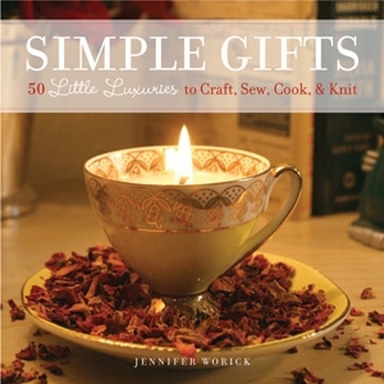

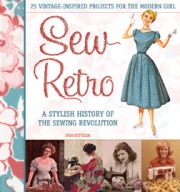

 RSS Feed
RSS Feed